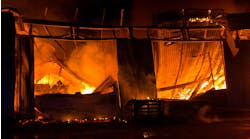OEMs don't agree with the practice, but clips are a way of life for many techs. Learn why full disclosure is vital if you head down this path.
This article will not attempt to recommend performing clipping or avoiding it — that needs to be a decision between all parties involved. What the article will explore are some aspects to consider when deciding about repairing a vehicle in this manner. We will take a look at who recommends it and who does not. We also will examine the issue of full disclosure, the preparation and measurement process, the skill level needed by the technician, the possibility of diminished value and the public perception of clipping.
Viewpoints vary
As noted, the repair method of clipping is a highly controversial subject, an argument that becomes clearer when one seeks knowledgeable opinions on this repair practice. To begin with, no vehicle manufacturers endorse clipping as a repair method. In fact, in a recent Toyota article, one of their collision repair instructors, James Myer, stated, "While clipping may seem to be a convenient shortcut, it can significantly decrease the quality and safety of the vehicle, and be responsible for negative customer satisfaction....po-tential problems include poor fit and body alignment, squeaks and rattles, wind noise, water leaks and diminished resistance to rust and corrosion."And during last month's NACE show, ABRN discussed clipping with representatives from General Motors. GM does not approve of the practice and echoed Ford's position on warranties. Clipping voids GM's new vehicle limited warranty, any variety of the GM Protection Plan, as well as GM's new vehicle service part and corrosion warranties for each part in the clip, the automaker states.
While other manufacturers also have statements against sectioning, some do not address the procedure.
Though vehicle makers do not recommend the process, some individuals or establishments believe it is an acceptable method of repair in certain situations. Jeff Poole, the trainer for I-CAR, Northeast Region, says, "I personally believe full body sectioning has its place in the collision repair industry as a viable repair alternative to piecing together a vehicle with numerous OEM parts. It is not for every repair situation. It is common knowledge the OEMs do not endorse this type of repair. Therein lies the biggest hurdle to selling a feasible repair. There is liability in any repair, whether we use new OEM parts or LKQ. We should fully disclose the potential valuation issues before we start cutting on the vehicle. This of course comes with some qualifications for the vehicle, customer, insurance company and donor vehicle."
With a similar viewpoint, Tech-Cor published a research bulletin, #1986-1, entitled "Unibody Full Sectioning Procedure." An introductory statement explains that the bulletin "describes in general terms a 'Full Body Section' procedure as it may apply to most unibody type vehicles currently in production." (1986) Tech-Cor developed the outlined procedure and sectioned test vehicles using the method. Then the repaired vehicles were tested under varying conditions. Tech-Cor reported that "the sectioned vehicles reacted comparably to the unsectioned vehicles in all tests performed. Our (Tech-Cor) research has shown that full body sectioning, when performed properly, is a practical and effective method of restoring vehicles to their original structural integrity after incurring severe structural damage."
So how should a repair shop respond, given these varying opinions? Like many other collision repair decisions, this is a business decision between the vehicle owner, repair facility and insurer. If all parties agree to the procedure, they may realize advantages over the full replacement of individual vehicle parts. Throughout the decision-making process, though, full disclosure must be made to all concerned.
Full disclosure
While the principle of full disclosure might seem straightforward, the process itself can be very difficult. It is not simply the telling of all parties involved what method (in this case) will be used to repair a vehicle, but also requires that all parties understand the proposed procedure and be confident that it is in the best interests of all. Repair shops must explain the procedure so that the customer is confident the technician involved has the skill level to complete the repair using this method. The shop owner needs to be assured that the customer is fully aware and agrees to this repair procedure. A written agreement between the business and customer may prevent later misunderstandings or repercussions.To reemphasize the controversy, not all in the industry agree that full body sectioning is "acceptable according to industry standards." It is, therefore, understandable that a vehicle owner may want to have a vehicle inspected for diminished value following this procedure. Without full disclosure, the repair practice might be called into question, attaching liability to the vehicle.
Shops should be aware that customers can find postings on the Internet urging against full body sectioning. As an example, a Nov. 11, 2004 posting appeared on the blog "AutoMuse." The posting, titled "Clipping—A Dangerous Repair Technique Condoned by Insurers," tells customers full body sectioning is not a safe and reasonable repair for their vehicle. Considering the public availability of such opinions, a repair facility that has not fully informed the customer of all advantages and disadvantages of this repair procedure — and recorded the resulting agreement in writing — may find itself involved in a legal dispute, should a customer claim not to have been alerted to all such information about the repair.
Preparation and measurement
One reason that this procedure remains controversial is that both vehicles — the one being repaired and the donor vehicle — have been involved in collisions. Generally, the vehicle being repaired has sustained a rear collision and the donor vehicle has sustained a frontal collision. To prepare for the sectioning, both vehicles must be measured and the sections that will be used must be returned to pre-accident measurements. As Mr. Poole noted, "I typically like to see the entire donor vehicle to better assess the possibility of indirect damages in the 'service part,' and (then) qualify the parts as acceptable for my customer's vehicle. It is kind of difficult to put the rear third of a vehicle on the measuring system and get a truly accurate assessment of its dimensional condition. Granted we will inspect and measure with a tape and tram; however, this leaves room for error."
After a donor vehicle is located and both vehicles have been inspected and pulled into specifications, if needed, the donor vehicle can be then harvested. This task entails cutting the donor vehicle a bit longer than necessary, so that there is extra material that will be trimmed precisely during fit-up.
With the vehicles prepared and the donor vehicle measured and harvested, next the shop must be confident that the technician assigned to the job has the needed skill level to complete a successful repair.
Technician skill level needed
Suppose a repair facility, after full disclosure, has obtained written permission of the vehicle owner and the endorsement of the insurance provider to complete the repair. Before proceeding with a full body clip procedure, the shop also needs complete confidence in a technician's ability to perform the challenging repair.Numerous skills will be required of the technician in this complex procedure. Technicians must possess superior judgment and skill when measuring, fitting, welding, applying corrosion protection and safeguarding against wind noise and water leaks.
The technician must be an accomplished MIG (Metal Inert Gas, now called GMAW or Gas Metal Arc Welding) welder. Though one of the advantages of full body sectioning is that less manufacturer corrosion protection will be disturbed, it remains that anywhere welding is performed on a vehicle, the technician must adequately restore the corrosion protection.
Besides those skills, the technician must also possess skill in precisely fitting the two sections together. If any misalignment occurs, the vehicle may suffer not only poor-fitting doors and misaligned body parts, but noise wind and water leaks, too.
Final pros and cons
Remember also that should you head down this repair path you must take into consideration differing state laws concerning VIN numbers and branded titles. Finding a donor and then measuring and restoring both halves to the vehicle's pre-accident condition can be difficult. In addition, not all technicians who attempt the procedure are capable of completing it without misalignment, leaks, or questionable welds occurring.
Yet, if all of the above difficulties can be overcome, there are some advantages to the procedure. It does save greatly on the repair cost. Additionally, some vehicles that would otherwise become total-loss vehicles can be salvaged thanks to clips. It is an efficient way to complete an otherwise costly and time-consuming repair job. Lastly, by using a body section instead of replacing multiple new parts, the vehicle's factory corrosion protections and factory welds can be preserved.
For the repair process to be accomplished properly, many obstacles must be overcome. All parties must agree; a suitable donor vehicle must be found, measured and returned to proper specifications, and a highly skilled technician must be available to complete the repair. For all involved, the decision remains one of choice.


